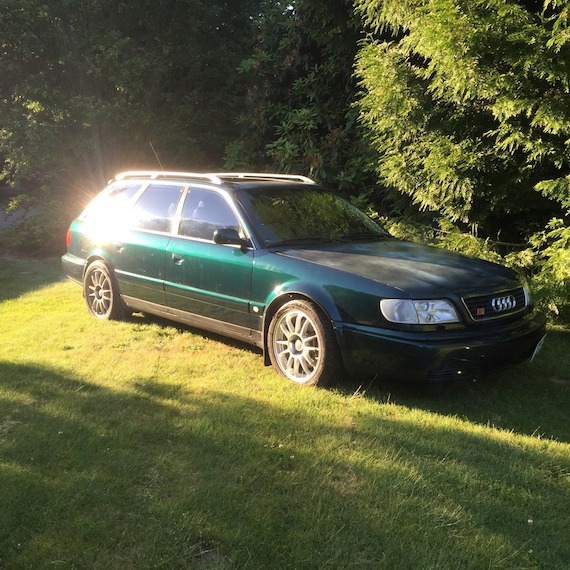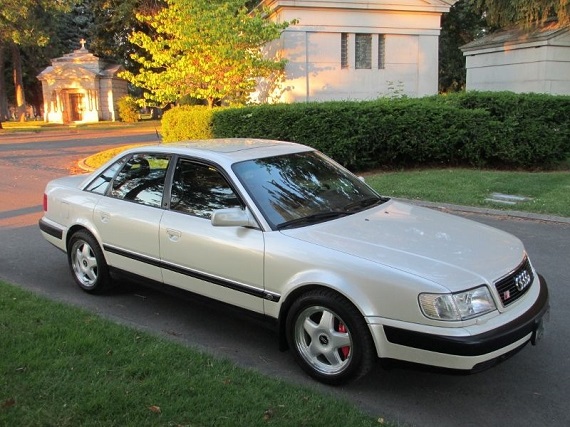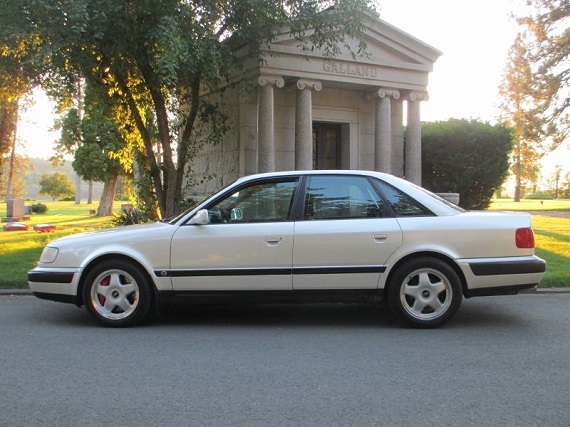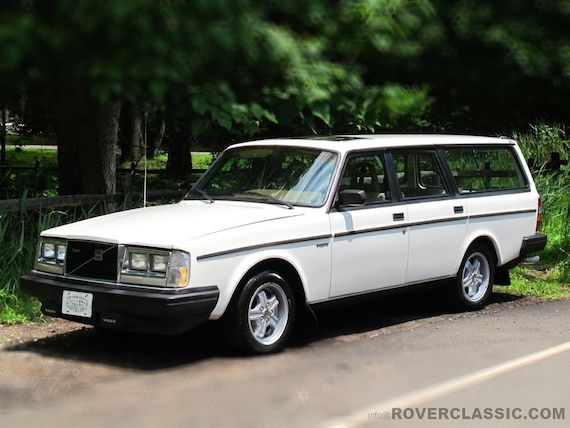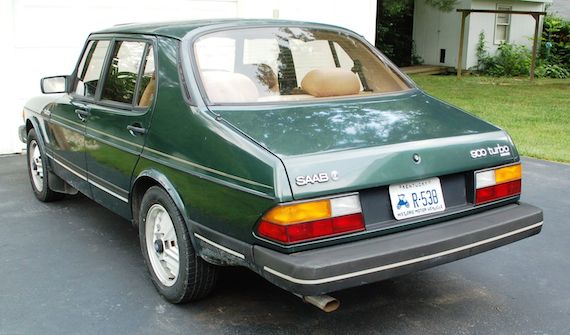In yesterday’s S4 post, I covered many of the special items that made the ’92 model unique for the U.S. market; in fact, I said that in many ways it was the most highly sought of the C4 models. Well, that probably was a bit of overstatement in at least one regard, because while it may be true for sedans for many the Avant model from 1995 was much more special. 1994 to 1995 saw some major changes for the C4; the most obvious being the model designation change from S4 (1991-1994) to S6 (1995-1997). European models had some additional drivetrain options that weren’t available in the U.S., and indeed the Avant had previously been available in S4 form, but the 2.2 liter turbocharged inline-5 carried over largely unchanged into 1995. The big news was the addition of the Avant to the U.S. lineup; at the time, as expensive as an Audi got here. There was also the obvious external refresh; smooth body-colored bumpers and wider side trims eliminated the rubberized black moldings. The hood and lights were lightly re-sculpted too, along with the change (rolling, for some models) from the Fuchs-made 5-spoke alloys to the Speedline-made 6-spoke Avus wheels which would be the signature S-wheel for the next decade. Gone were two staples of the Audi lineup from the 1980s – Procon 10, the seatbelt pre-tensioning safety system Audi highly marketed in the late 1990s disappeared with little fanfare, but also, perhaps more strikingly, S cars would no longer be branded with “quattro” badges – a change that would carry on nearly until today’s models, where models like the RS7 re-introduced it in the grill. Inside minor changes were introduced; a revised dashboard, shift knob, along with the introduction of the most notable change (once again, rolling) to a 3-spoke sport steering wheel. It was a tremendous amount of minor changes that in sum resulted in a slightly different feel for the S6; slightly more polished and grown up, carrying the new design language for Audi that would remain for the next decade. Audi wasn’t done, though, because in “1995.5” Audi once again changed several items on the then-still-new S6. This included a major change moving forward – the elimination of driver control of the rear differential, a hallmark of Audis since the introduction of the original Quattro. Audi opted for an “electronic differential lock”, which in reality was a system which utilized the ABS system to detect wheelspin and apply the brakes. This major change resulted in some minor interior tweaks, such as moving the cigarette lighter, and there were additional revisions to the radio. The transmission’s traditional weak first gear was also addressed, as well as adding infrared locking and some other minor trim changes. All of these changes – some of them running changes – give the limited production S6s, and especially the Avants, a bit of a bespoke feel. With numbers produced only in the hundreds, these are special and coveted cars that are very capable – and highly sought:
Tag: Turbocharged
We’ve gotten a lot of positive feedback from readers over the last few months with regards to some of the Swedish machines we’ve featured from time to time. Sure we get the errant “that’s not German” comment from time to time, but somehow “German and Swedish Cars For Sale Blog” would add a bit too much length to the website address. That being said, let’s take a look at this 1983 Volvo 245GLT Turbo Wagon for sale in New York. For almost 20 years, the Volvo 200 series was the bread and butter car for this manufacturer, with many of them still on the road to this day. Like the Mercedes-Benz W123 sedans, coupes and estates, these Volvos were nearly indestructible. The only thing which might have made them even more versatile is four-wheel drive.
Amazingly, Volvo did have a bit of a competition history with the 200 series, competing with versions of the 240 Turbo in touring car racing in the 1980s. This would extend into the 1990s when Volvo would field a variant of the 850 estate in the British Touring Car Series. There was really nothing like seeing this five-door brick fly around the track. These fast wagons were the result of a collaboration with Tom Walkinshaw Racing, and it was Walkinshaw himself who stated in an interview “the psychological pressure placed on other drivers when being overtaken by an estate cannot be ignored.” Duly noted. This clean 245GLT Turbo Wagon may not be as fast as those race cars from the 1980s and 1990s, but with a manual gearbox and the 2.1 liter turbocharged engine, you’ll at least be able to have some fun with your heavy helping of practicality.
CLICK FOR DETAILS: 1983 Volvo 245GLT Turbo Wagon on eBay
1 Comment“Hey, Saab is Swedish, not German.”
Yes, yes, we’ve heard this line many times before, but we here at GCFSB appreciate the machinery from our Nordic neighbors, especially when it comes to a vintage icon like the Saab 900 Turbo. The 900 Turbo was the car that put Saab square in the crosshairs of many a yuppie in the 1980s. For those who thought a Mercedes-Benz or BMW was just a bit too mainstream, the 900 Turbo was unique enough to satisfy the anorak of car enthusiasts. It was also one of the first mainstream production cars to feature a turbocharged engine, years before other manufacturers discovered this technology as a way to maximize economy without sacrificing performance.
This 900 Turbo for sale in Kentucky is a low mileage example that sat for a number of years before being rescued by Saab enthusiast.
CLICK FOR DETAILS: 1985 Saab 900 Turbo on eBay
3 CommentsE21s seem to be gaining popularity, with some beautiful, low-mileage examples coming out of the woodwork and pulling upwards of $20k! This 1983 320is is more about fun and less about preservation, strapping a Mitsubishi TD04 turbo on, a snail more commonly used on Saabs. To support the increased output, parts from a fun variety of cars – Audi 200 Turbo, VW GTI, Volvo 240 Turbo – come together to give this little 3er a bit more oomph than the M10’s original 125hp. With the “is” model’s inherent improvements in handling and power delivery and a hefty new-parts list, this E21 looks to be a fun little handful.
